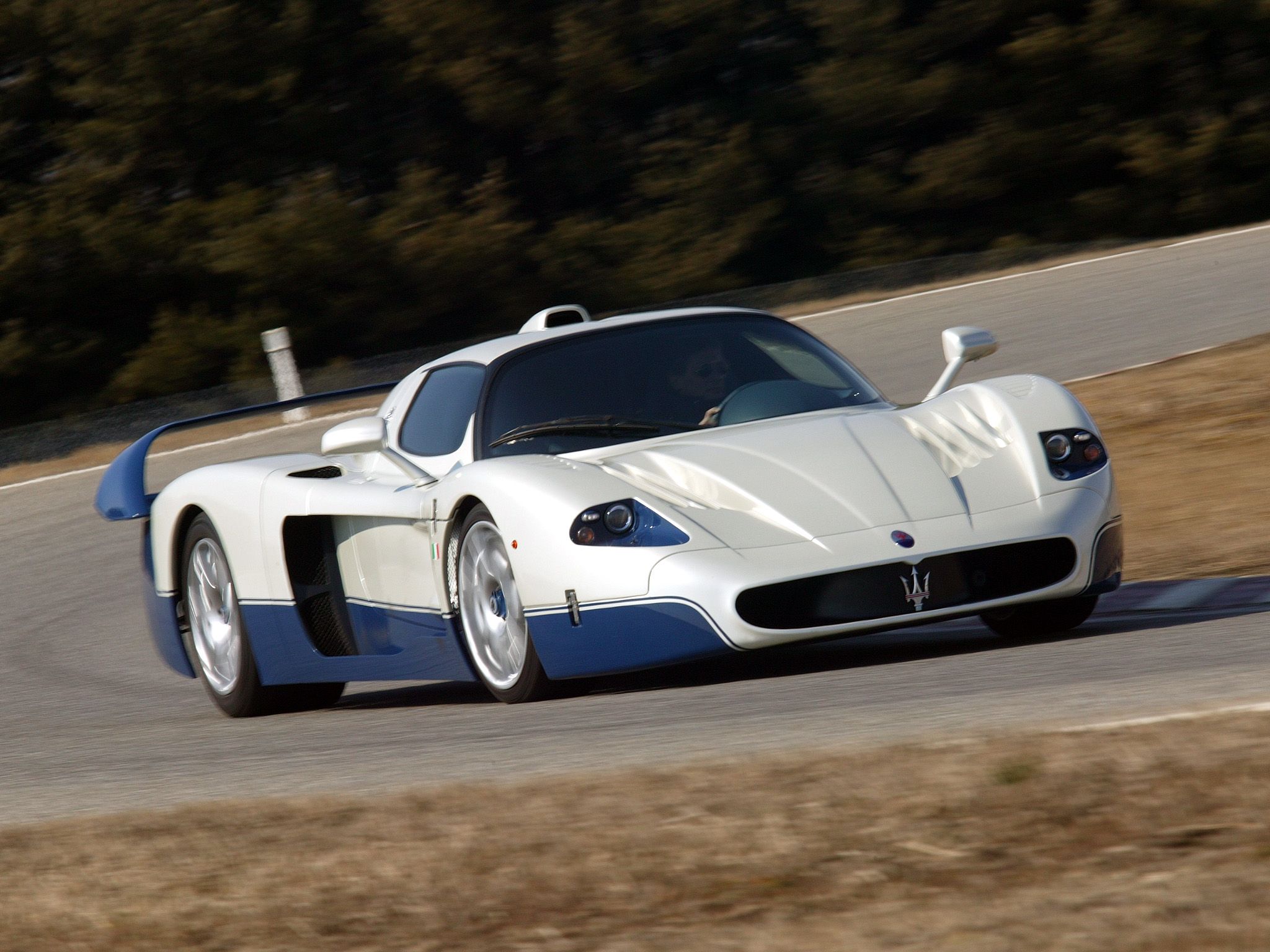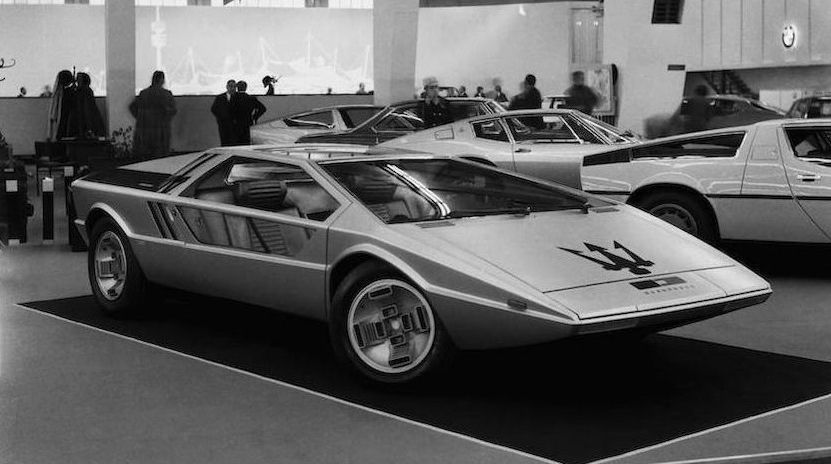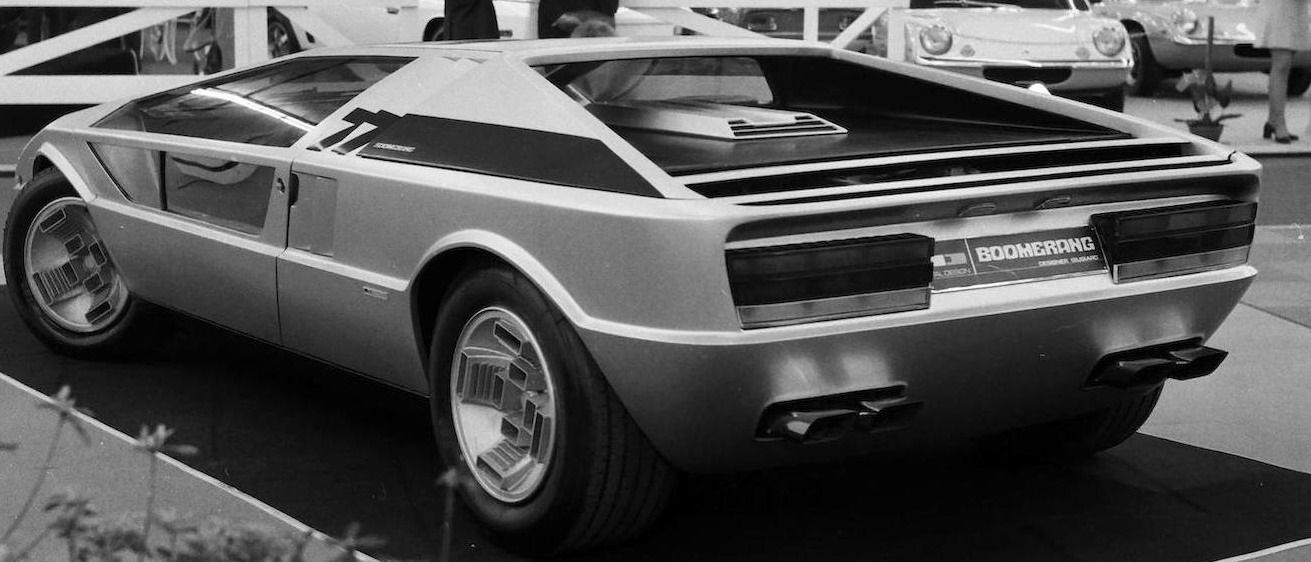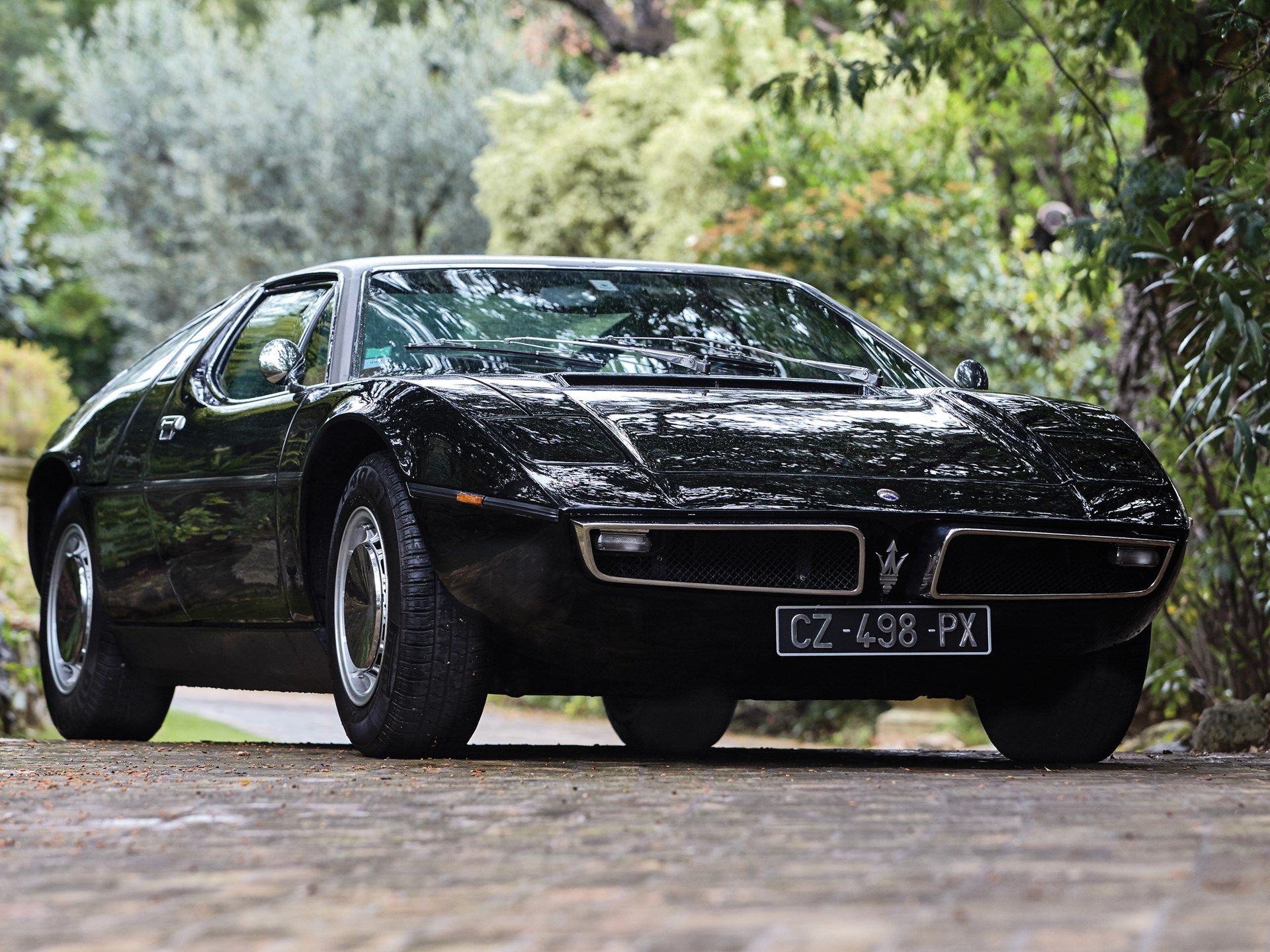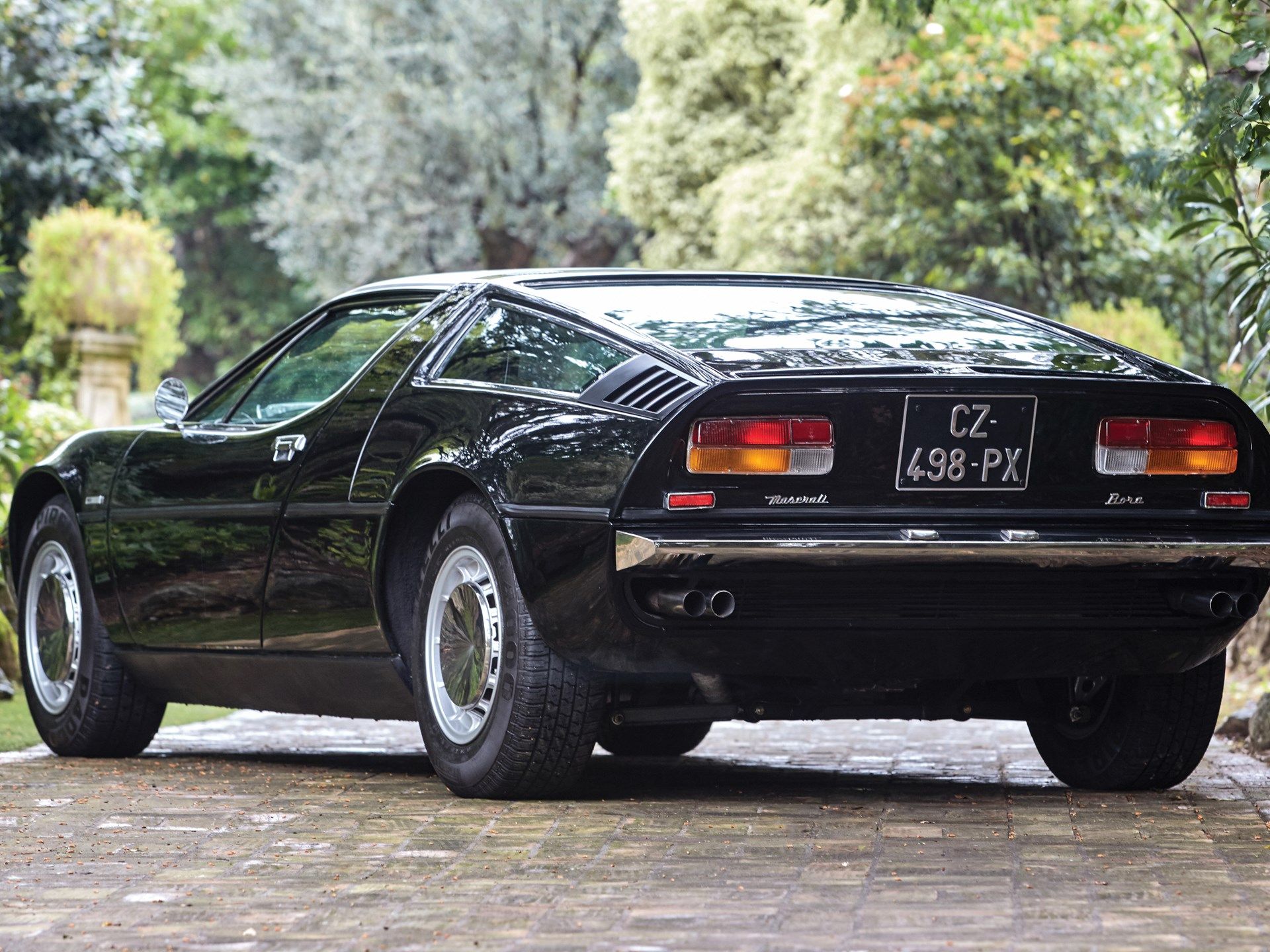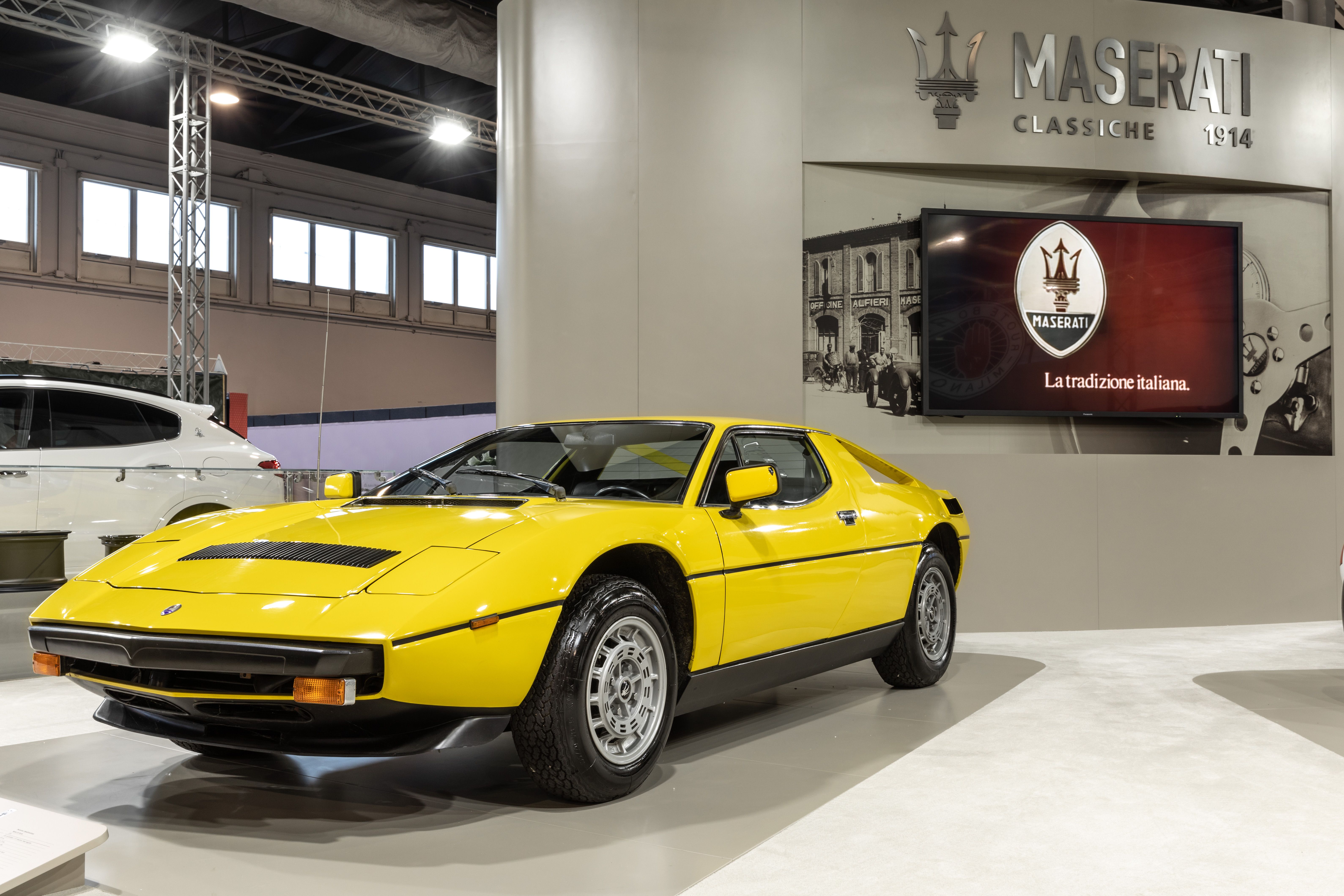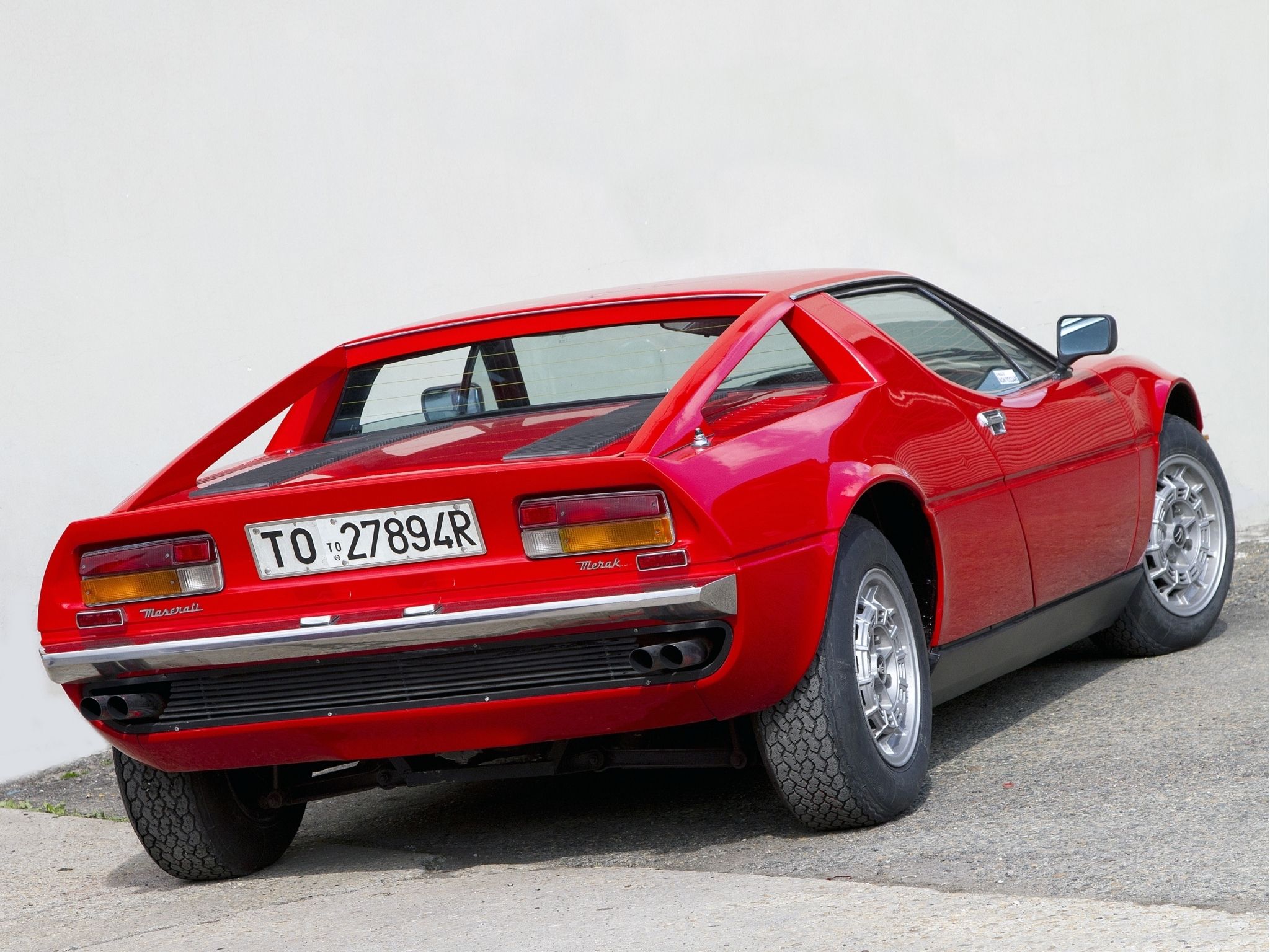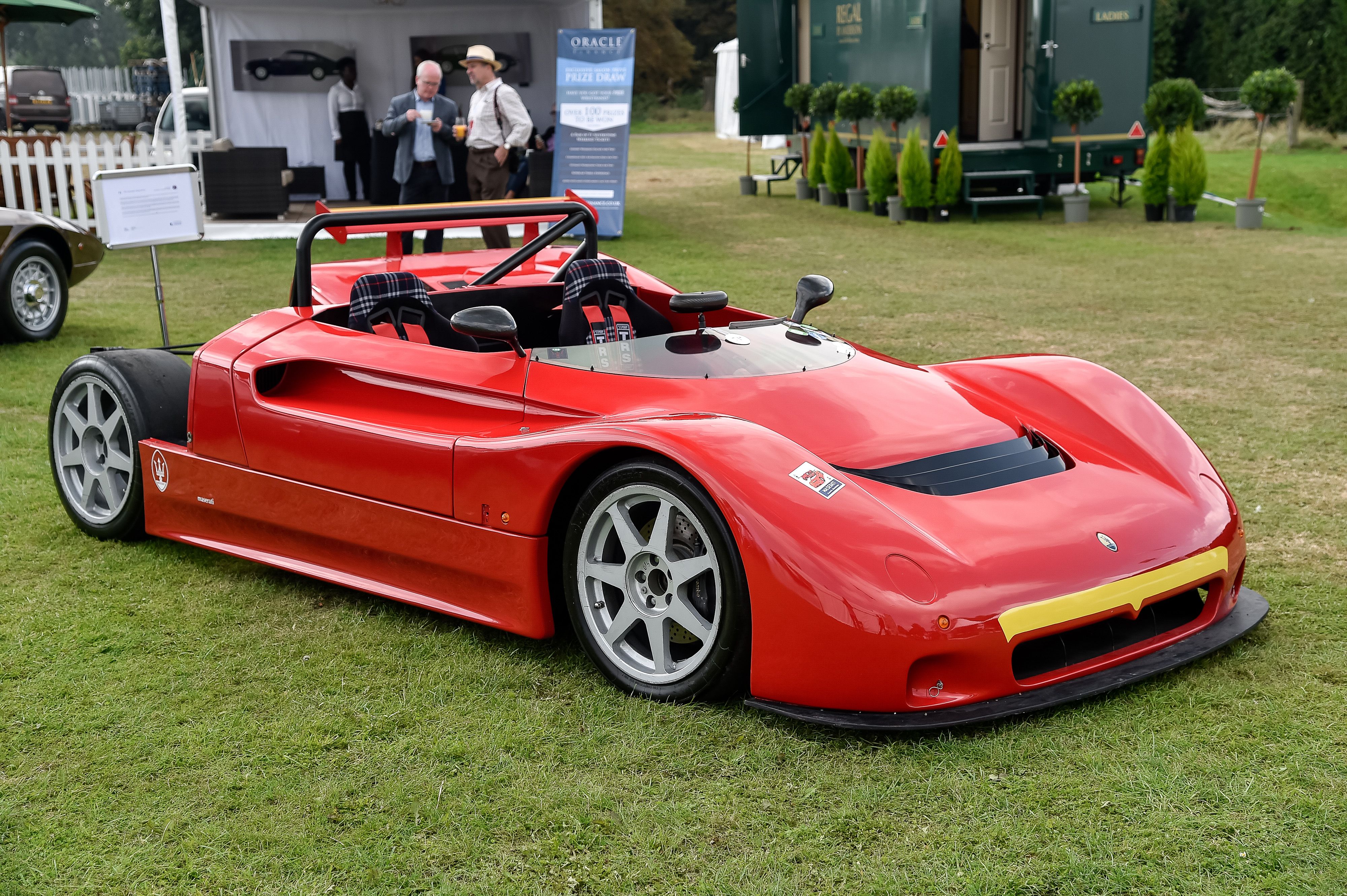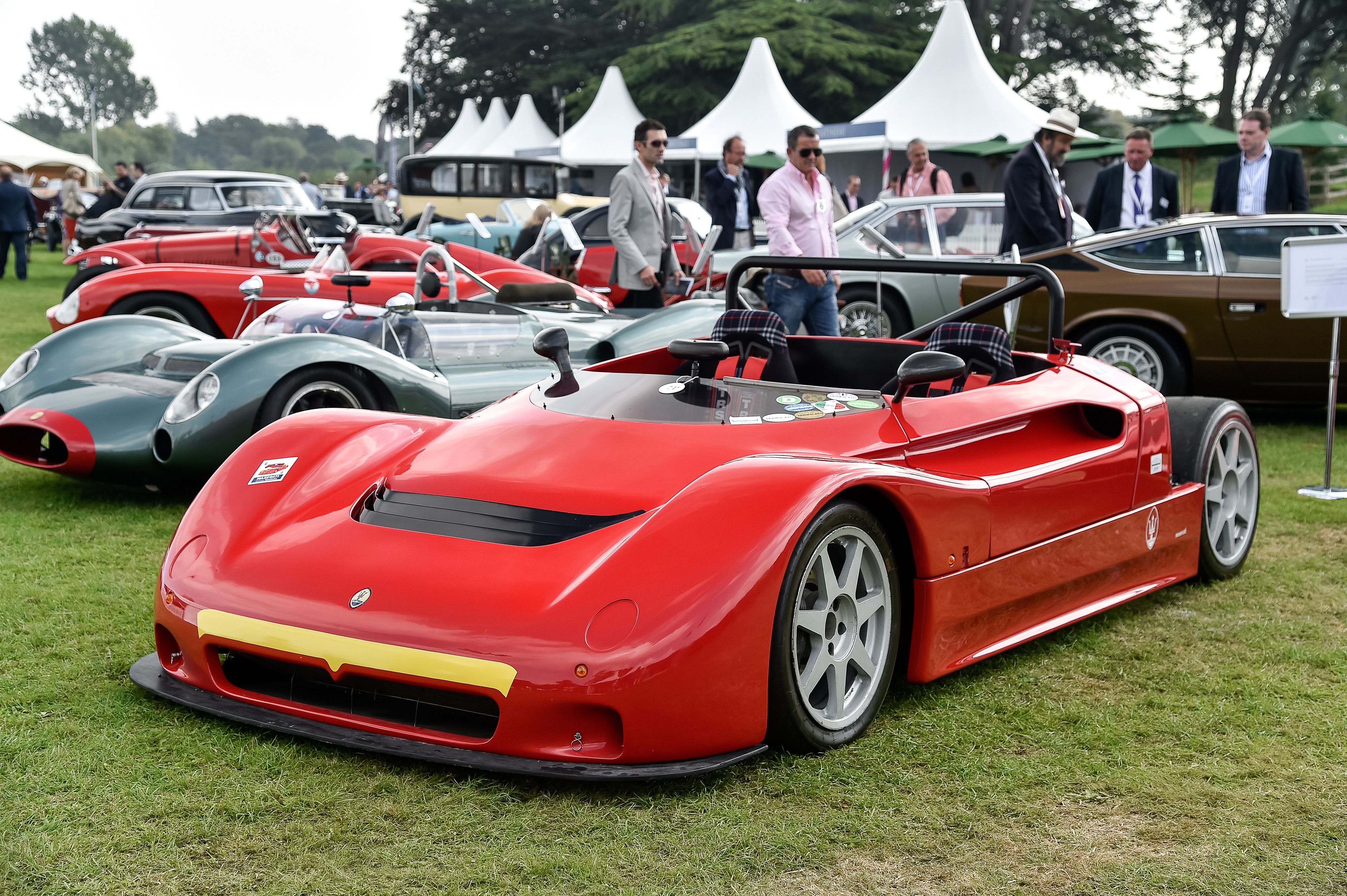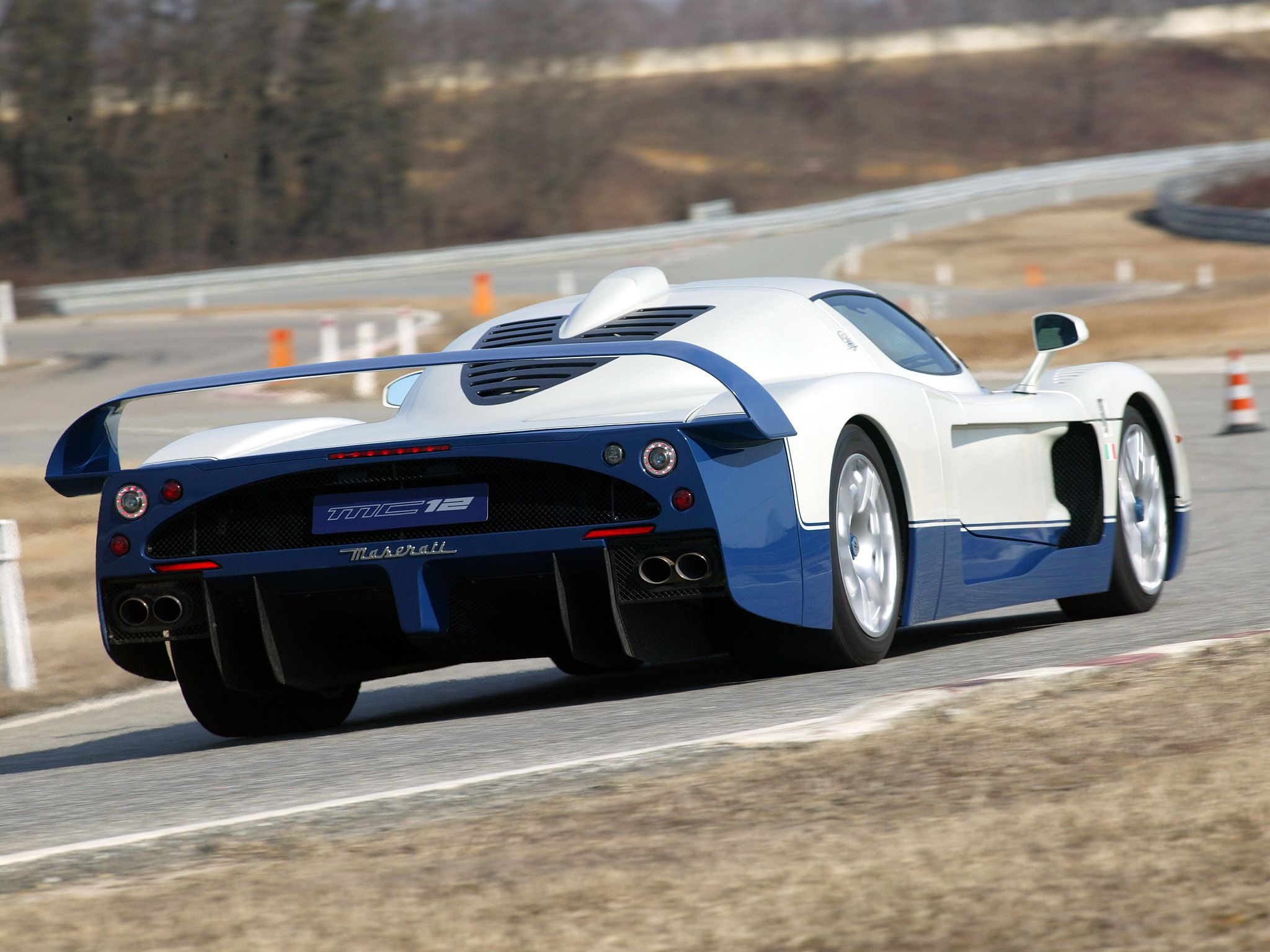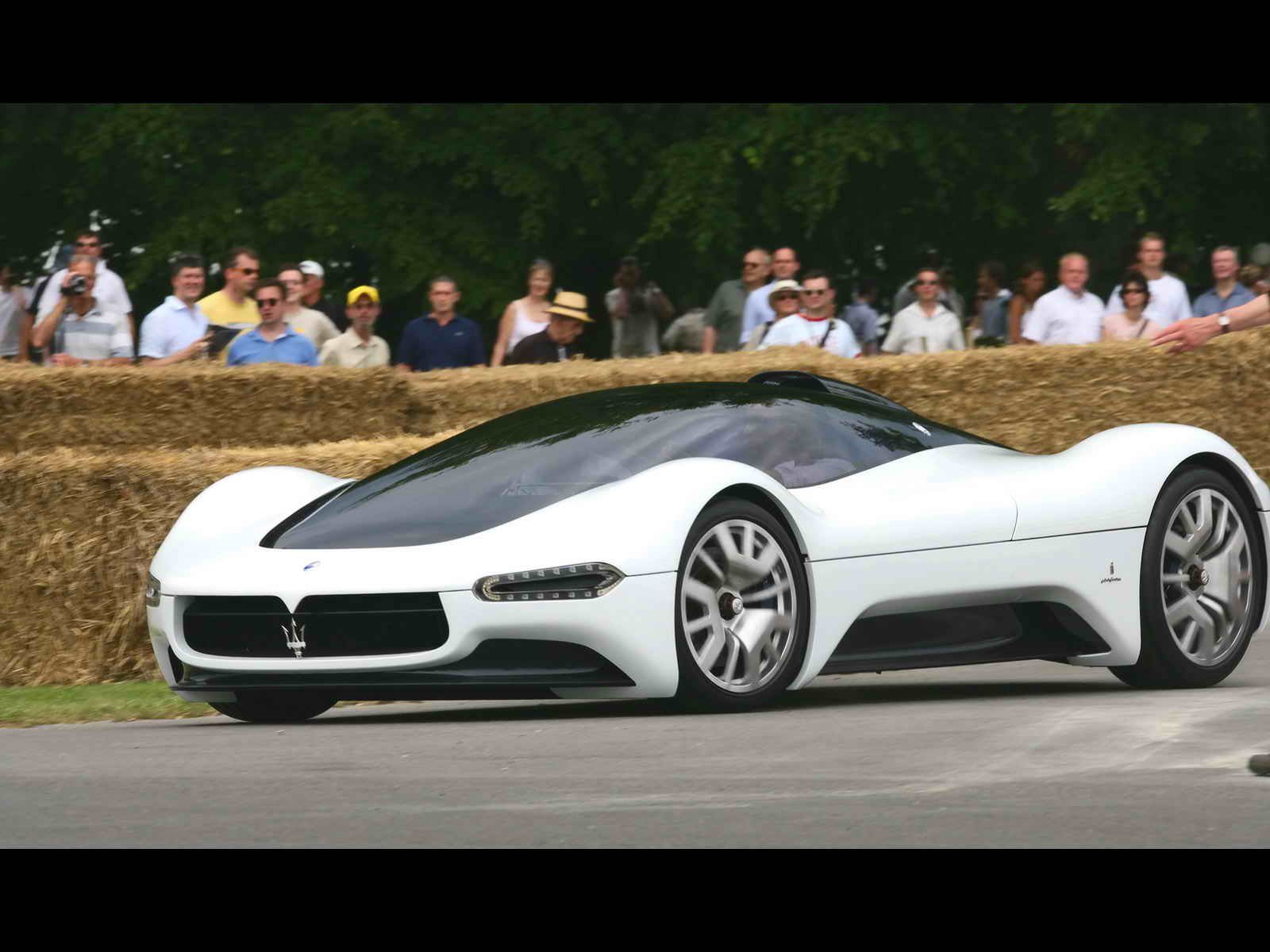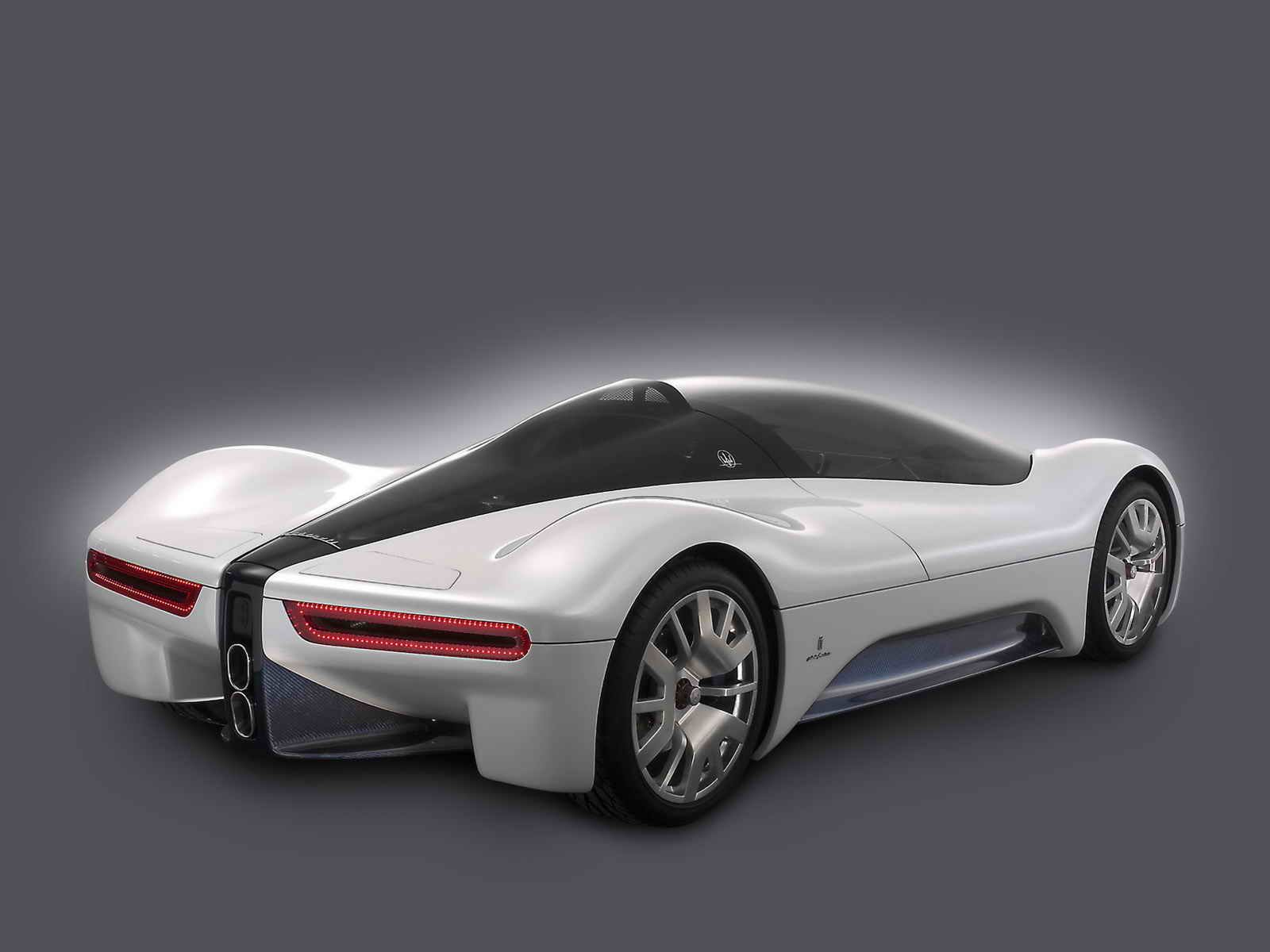Maserati has confirmed that a new mid-engined sports car is underway in 2020. Although the official unveiling was postponed due to the COVID-19 pandemic, the new MC20 will arrive by the end of the year. The MC20 won't be a successor to the MC12 though. Instead of a highly exclusive supercar, Maserati is preparing a more affordable sports car that will probably go against the Ferrari F8 Tributo and the McLaren 720S. It will also be the company's first mid-engined car since 2005, the first in 15 years as of 2020. A rare bird among Maserati's long list of front-engined cars, the MC20 will become one of only seven midship vehicles built by the company in its long existence.
1971 Maserati Boomerang
Maserati's first mid-engine vehicle, the Boomerang, was unveiled at the 1971 Turin Motor Show as a non-functional concept. Development began in 1968, shortly after Citroen purchased a controlling stake in the Italian brand. With Lamborghini and DeTomaso having already unveiled mid-engined sports car and with Ferrari working on its own design, Maserati and Citroen began working on a similar vehicle. The end result arrived three years later as the Boomerang. Designed by Giorgetto Giugiaro, the Boomerang inspired the Bora, the company's first production car with a mid-engined layout. The Boomerang was fitted with the same 4.7-liter V-8 that found its way into the Bora.
1971 Maserati Boomerang specifications
|
Engine: |
4.7-liter V-8 |
|---|---|
|
Horsepower: |
310 horsepower |
|
Torque: |
325 pound-feet |
|
0-60: |
n/a |
|
Top speed: |
n/a |
Check out more details on the 1971 Maserati Boomerang
1971 Maserati Bora
The Bora went into production in 1971, shortly after the Boomerang concept was shown to the public. Heavily inspired by the show car, the Bora was Maserati's first production car with a mid-engined configuration. The two-seat sports car was designed by Giorgetto Giugiaro at Italdesign and features a wedge-shape exterior, a common styling element of the early 1970s. Although it wasn't the first mid-engined sports car in the world, having arrived some five years after the Miura, the Bora had a few advantages over the competition. For starters, it featured a decent trunk under the front hood. Second, it was more comfortable and civilized than its competitors. It featured a glass panel between the seats and the engine compartment, as well as a carpeted aluminum engine lid, both of which greatly decreased engine noise inside the cockpit.
The Bora was originally offered with a 4.7-liter V-8 engine rated at 310 horsepower and 325 pound-feet of torque. In 1973, Maserati introduced a stroked 4.9-liter engine for U.S. exports. This mill was slightly more powerful at 320 horsepower and 335 pound-feet of torque. The 4.7 version had a top speed of 168 mph, while the 4.9 variant was rated at 177 mph, both impressive figures for the era. A five-speed ZF manual transmission was offered with both engines. The Bora shared some components with the Citroen SM, including advanced hydraulics for the ventilated disc brakes. Production of the Bora lasted until 1978. A total of 564 cars were built.
1971 Maserati Bora specifications
|
Engine: |
4.9-liter V-8 |
|---|---|
|
Horsepower: |
320 horsepower |
|
Torque: |
335 pound-feet |
|
0-60: |
4.9 seconds |
|
Top speed: |
177 mph |
Read our full review on the 1971 Maserati Bora
1972 Maserati Merak
Introduced in 1972, the Merak was heavily based on the Bora. It shared most of its structure and body panels, but it had just enough unique features to stand out. But it wasn't the revised deck lid and the mild changes front and rear that set it apart from the Bora. It was the engine. While the Bora came with a large V-8, the Merak was sold with a couple of smaller, 2.0- and 3.0-liter V-6 engines. The more compact engines enable Maserati to gain extra cabin space and fit the second row of seats. These were suitable for children or very small adults and turned the Merak into a 2+2.
The Merak was launched with a 3.0-liter V-6 engine rated at 187 horsepower, which enabled a top speed of 149 mph. In 1975, Maserati introduced the Merak SS, which was lighter and had a slightly more powerful V-6, rated at 217 horses. In 1977, Maserati launched the Merak 2000 GT, fitted with a smaller, 2.0-liter V-6. This model was built almost exclusively for the Italian market, where a new law penalized cars with engine capacity greater than 2.0 liters. Essentially a competitor for the Lamborghini Urraco P200 and Ferrari Dino 208 GT4, the Merak 2000 GT, came with 168 horsepower on tap. Production of the Merak ended in 1983, with some 1,830 units built in 11 years. Needless to say, the Merak is Maserati's most successful mid-engined car to date.
1972 Maserati Merak specifications
|
Engine: |
3.0-liter V-6 |
|---|---|
|
Horsepower: |
217 horsepower |
|
Torque: |
188 pound-feet |
|
0-60: |
6.3 |
|
Top speed: |
149 |
1991 Maserati Barchetta
Unlike the Bora and the Merak, the Barchetta is a track-only vehicle. Introduced in 1991 and built only until 1992, the Barchetta was developed for a one-make racing series called Grantrofeo Barchetta. The only two seasons, raced in 1992 and 1993, included races throughout Italy and Europe. Some say he Barchetta was designed as a way to add new enthusiasm to Maserati, which by the late 1980s had a bad reputation for quality control issues and poor reliability.
Built in just 17 units, the Barchetta shared some underpinnings with the road-legal Maserati Biturbo and the DeTomaso Guara. The Barchetta was actually one of the last Maserati models built under DeTomaso ownership. The Barchetta was fitted with a revised version of the 2.0-liter V-6 engine that Maserati offered in the Italian-spec Biturbo and Ghibli models. The turbocharged mill delivered 315 horsepower, which was enough to give the 1,700-pound Barchetta tremendous performance potential. The Barchetta was capable of reaching a top speed of 180 mph, an impressive figure for an open-top car. Discontinued in 1992, the Barchetta was Maserati's last mid-engined design until 2004.
1991 Maserati Barchetta specifications
|
Engine: |
twin-turbo 2.0-liter V-6 |
|---|---|
|
Horsepower: |
315 horsepower |
|
Torque: |
289 pound-feet |
|
0-60: |
4.3 seconds |
|
Top speed: |
180 mph |
2004 Maserati MC12
By far the most iconic mid-engined car built by Maserati so far, the MC12 had a rather short life, spanning from 2004 to 2005. The MC12 was based on the Ferrari Enzo, Maranello's flagship supercar at the time. It shared the same underpinnings and engine, but the body was Maserati's very own design. Some argue that the MC12 is actually a better-looking car than the Enzo, a statement I agree with. Just like the Enzo, the MC12 features a full carbon-fiber body. The interior is also unique compared to the Ferrari and a tad more luxurious, combining gel-coated carbon-fiber, fine leather, and a bespoke synthetic material called Brightex.
Under the hood, the MC12 boasts the 6.0-liter V-12 engine of the Ferrari Enzo. The naturally aspirated mill cranks out 621 horsepower and 481 pound-feet of torque, 30 horses, and four pound-feet below the Enzo's output. Revised versions of this engine were later used in the LaFerrari and are now offered in the 812 Superfast and the Monza SP1/SP2 models. The MC12 was one of the quickest supercars of its era, needing 3.8 seconds to hit 62 mph from a standing start. It also runs the quarter-mile in 11.3 seconds and hits a top speed of 205 mph.
While the Ferrari Enzo was built in 400 units, the Maserati MC12 spawned only 50 cars. That's because the purpose of the road car was to help homologate an FIA GT-spec race car. The MC12 GT1 featured the same engine, but detuned to around 592 horsepower, and was used to compete in the FIA GT1 Championship, Italian GT, Japan's Super GT series, and the American Le Mans Series.
In addition to the GT1-spec car, Maserati also built the MC12 Versione Corse. Also, a race-spec car, Versione Corse, was intended for private use, which made it an alternative for the Ferrari Enzo FXX. Heavily based on the GT1 car, it featured extreme modifications for racing, while the V-12 engine was beefed-up to deliver 745 horsepower. Only 12 cars were built, taking the MC12's total production output to 62 units.
2004 Maserati MC12 specifications
|
Engine: |
6.0-liter V-12 |
|---|---|
|
Horsepower: |
621 horsepower |
|
Torque: |
481 pound-feet |
|
0-60: |
3.6 seconds |
|
Top speed: |
205 mph |
Read our full review on the 2004 Maserati MC12
2005 Maserati Birdcage 75th
The Birdcage 75th arrived in 2005, and it was Maserati's last mid-engined design. Just a concept car first shown at the 2005 Geneva Motor Show, the Birdcage 75th celebrates Pininfarina's 75th anniversary and pays tribute to the Maserati Birdcage race car of the 1960s. A somewhat futuristic design, the Birdcage 75th features spoilers and diffusers that raise automatically at speed, a concept now common on production supercars. It also lacks conventional doors, replaced by a bubble canopy that tilts forward to enable ingress and egress.
The Birdcage 75th was built on the carbon-fiber chassis of the Maserati MC12 GT1, so it's powerful by the same 6.0-liter V-12 engine. Although the concept sparked rumors that Maserati is working on a successor to the MC12, the Birdcage 75th never became more than a show car.
2005 Maserati Birdcage 75th specifications
|
Engine: |
6.0-liter V-8 |
|---|---|
|
Horsepower: |
745 horsepower |
|
Torque: |
n/a |
|
0-60: |
n/a |
|
Top speed: |
n/a |
Read our full review on the 2005 Maserati Birdcage 75th

